|

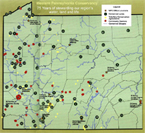
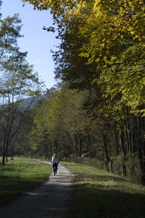

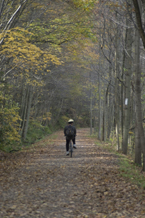
The Great Allegheny Passage (Photos by Paul g. Wiegman)
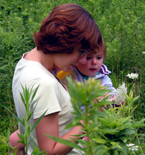
Beechwood Farms |
|
1970s
The Great Allegheny Passage
In 1973, the Western Maryland Railway (WmdRwy) was shutting down its rail system from Cumberland, Maryland to Connellsville, Pa. Joshua C. Whetzel, then president of WPC, recognized the value of long threads of green space as trails, and quickly embraced the idea of converting the Western Maryland corridor to a trail.
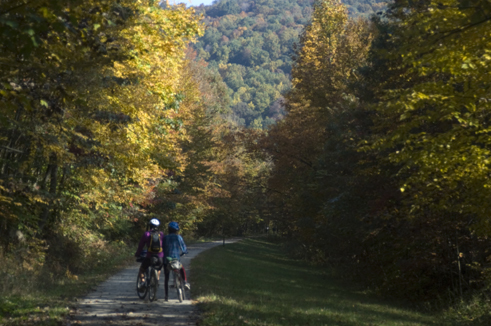
In October of that year Mr. Whetzel, along with Vice President John C. Oliver, met with Western Maryland executives in Cleveland and a plan for the preservation of the rail corridor from Cumberland to Connellsville was born. In
the following months, the many details associated with such a complicated land transaction were the focus of the Conservancy staff. Mr. Whetzel led the
intricate negotiations between the railway, the Conservancy and the State of
Pennsylvania.
After long negotiations, the Conservancy purchased a section of the WmdRwy between Connellsville and Confluence for a very reasonable price. In November of 1978, meeting at the site of another Conservancy milestone, Ferncliff Peninsula in Ohiopyle State Park, John Oliver passed the deed to the Western Maryland property to the State of Pennsylvania.
One of the principal organizers and early presidents of the Allegheny Trail
Alliance was then WPC Board Member Linda McKenna Boxx, who became the face and heart of the Alliance and the trail that is now called the Great Allegheny Passage. Early in 2007, the last miles from Frostburg, to Cumberland, Md. opened, connecting Cumberland and McKeesport, Pa. and creating 150 miles of scenic trail for hikers, bikers, naturalists, sportsmen and others with a love for the outdoors to enjoy some of the most remote and beautiful parts of western Pennsylvania.
| Beechwood Farms
Just eight miles northeast of Pittsburgh lies Beechwood Farms Nature Reserve, 134-acres of land with a variety of natural areas that can be enjoyed at any season. Beechwood is the largest nature reserve in Allegheny County. The
original 90 acres for the reserve were a gift to the Western Pennsylvania
Conservancy in 1976 by Mrs. John F. Walton, Jr., and Mr. & Mrs. Joshua C.
Whetzel, Jr. Evans Nature Center, a focal point of the reserve, was made
possible through a grant from the Thomas Raymond Evans Foundation of Pittsburgh.
Beechwood Farms was preserved not because of unique habitats, but because its landscape typifies much of western Pennsylvania—a natural landscape that is fast disappearing to development—and even more so because it would provide an environmental education facility close to an urban area. Today, Beechwood
Farms includes a nature center, two miles of walking trails and is the
headquarters of the Audubon Society of W. Pa. (ASWP). The open land at the reserve is owned by WPC and leased to the ASWP for its use in environmental education programming.
WPC transferred the nature center buildings to ASWP for their ownership. ASWP also manages the WPC land as a diversity of habitats: thickets, forests, a pond and two intermittent woodland streams.
Recently, former WPC President Joshua C. Whetzel Jr., who, with his family, donated the land to create Beechwood Farms Nature Reserve, talked about how and why the project came into existence.
Beechwood Farms had an old farmhouse on it and when my family decided we wanted to establish a reserve that the Audubon Society would use, we started to raise money to expand the farmhouse for education.
We also wanted to connect the grounds, which meant purchasing another 45 acres right in the middle of the site. The price was pretty steep in 1975 — I think $96,000.
I went to see Peg Berdan. We had talked in the past about how we wanted to introduce nature to people living in the city. She and her siblings were trustees of a foundation, the Thomas Raymond Evans Foundation. Peg agreed that this was important work and she was able to convince the family trustees to finance the project.
We had always envisioned the Audubon Society having a place for their operation on the reserve and we felt it was a good fit, since their leadership was on the Conservancy’s board at the time. I think the reserve has worked out even better than I could have imagined;
mainly because of the way Jim Bonner at the Audubon Society is running the show today. I’ve been asked why I gave my land to the Conservancy when I had always
envisioned having another organization operate and use the property. I remember thinking that the land represented a significant asset that would likely grow in value as land became more and more scarce for development in the Fox Chapel area.
I wanted the land to be a meaningful financial asset for WPC, the organization that I led for so many years. |
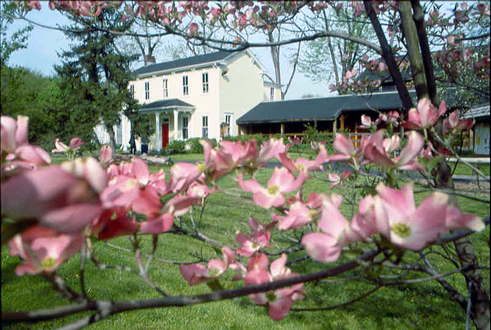
|
|
1970-81 More than 9,182 acres of shoreline and islands acquired in the Allegheny River corridor from Warren County to Allegheny County.
1971-74 WPC conserved 9,500 acres of wild mountain land along the west slope of Laurel Hill in Westmoreland and Somerset counties as part of Forbes State Forest.
1973 WPC merged with Pittsburgh Parks and Playgrounds Society.
1976 Fallingwater is designated National Historic Landmark.
1976-79 Beechwood Farms Nature Reserve established in Fox Chapel, Allegheny County.
1978 John C. Oliver named WPC’s President and CEO. His would serve the longest term for a WPC President at 17 years, leaving to serve on the cabinet of Gov. Ridge as the first secretary of the Department of Conservation and Natural Resources.
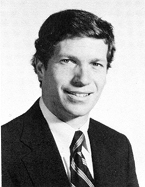
WPC initiated the Clarion River Conservation plan. Once considered
to be the most heavily polluted river in Pennsylvania, WPC’s initial
involvement came at the urging of the late Roger Latham, WPC board
member and outdoors editor of The Pittsburgh Press.
1979 WPC acquired 12,670 acres of wild mountain land in Clinton and
Centre counties for the creation of a major new State Game Land (#295).
This Cherry Run project is the largest acquisition in WPC history.
WPC transferred a deed to the Commonwealth of Pennsylvania for
17 miles of abandoned railroad right-of-way to serve as a trail from
Confluence to Bruner Run in the Youghiogheny River gorge in Fayette
County. WPC extended the trail further north to Connellsville by
securing more railroad line in 1986.
WPC purchased 100-acre Wolf Creek Narrows Natural Area in Butler County;
a site famous for its spectacular display of spring wildflowers. |








